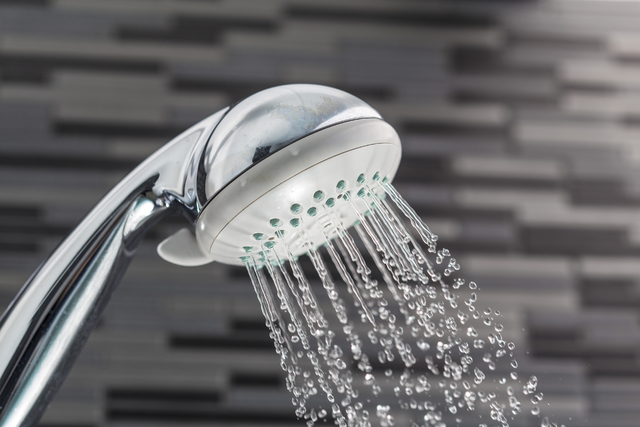Recirculating pump brings instantaneous hot water, minimizes waste
Q: I am having a problem with hot water in my 2-year-old house. My bathroom and water heater are located on opposite sides of the house, and I have to wait forever to get hot water for a shower. I hate watching the cold water running down the drain while I wait. Is there anything I can do?
A: You can learn to take cold showers or you can install a hot-water recirculating pump to minimize wasted water. It is best to install the pump under the sink that is farthest away from the water heater.
In a new house, a hot-water “loop” is built in and runs throughout the house. The recirculating pump uses only a fraction of a horsepower to keep the hot water circulating through this loop. The plumbing fixtures are branched off of the loop, and, therefore, you have almost instantaneous hot water.
According to the Southern Nevada Water Authority, as many as 30 gallons per day per household could be saved with a recirculating pump.
To save energy, most pumps have a timer so they only run when they are needed. You can purchase such a system at a home center for between $250 and $500, but you will have to run electricity to within 6 feet of the pump.
The pump system will create its own loop by using the cold water side of the sink’s plumbing as the return for the hot water. The drawback is you will have to let the warm water clear to get cold water. This system will also give you hot water quickly at all fixtures between the water heater and the sink where the pump is installed.
The biggest chore is to run electricity to a location under the sink. You can best do this by tying into a current outlet above the sink and running the power down the same stud bay. Just realize that there is plumbing somewhere down there, too, so don’t go crazy with the drywall saw.These outlets must be GFCI protected, so you may need to add a GFCI receptacle. You also need to make sure the existing outlet is suitable to supply power to the new one.
Use a stud sensor and follow the stud bay down under the sink. Buy a remodeling box and trace around it with a pencil. Cut shallowly around the mark with a drywall saw. Shut off power to the circuit at the main panel and punch out a knockout plug at the back of the existing box.
Feed a length of 14-gauge NM (nonmetallic) cable through the hole and down to the new box’s location. (You will need 12-gauge if the circuit is 20 amps.) Secure the cable with a cable clamp.
Push the cable through the remodeling box’s cable clamp and leave a foot of cable coming into the box. Push the remodeling box into the hole and tighten the screws, which will pin it to the wall.
Back at the existing box, strip 10 inches of sheathing off of the end of the cable, leaving 2 inches of sheathed cable in the box. Strip one-half inch of insulation from the ends of the wires and connect them — black to black, white to white and ground to ground — using wire nuts. You may have to “pigtail” these connections (using short lengths of wire to cut into the wiring) depending on if the outlet is middle- or end-of-run.
At the new outlet, strip the wires in the same manner. Connect the copper wire to the green ground screw on the new outlet. Connect the white neutral wire to the silver terminal, then connect the black hot wire to the brass terminal. Secure the outlet to the box and then attach the cover plate. Flip the breaker back on and get ready for the plumbing.
Back under the sink, mount the pump to the wall with the provided bracket. Turn off the water supply valves under the sink and disconnect the water supply lines at the faucet. Screw these lines into the bottom nipples of the pump housing — hot to hot and cold to cold.
You will need two water supply lines — one for hot, one for cold — to connect the pump to the faucet. Use Teflon tape for all connections.
Turn the water supply valves back on and bleed the air out of the faucet. Plug the pump into the outlet and set the timer. You can also run it automatically whenever the water temperature drops below a certain level.
Mike Klimek is a licensed contractor and owner of Las Vegas Handyman. Questions may be sent by email to: handymanoflasvegas@msn.com. Or, mail to: 4710 W. Dewey Drive, No. 100, Las Vegas, NV 89118. His Web address is www.handymanoflasvegas.com.
Do-it-yourself
Project: Hot water recirculating pump
Cost: From $250-$500
Time: 2-4 hours
Difficulty: ★★★★




























